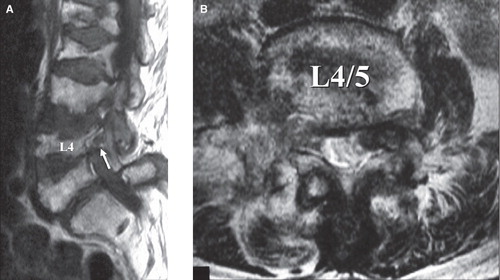Figures & data
Table I. Patients' data.
Figure 1. A 69-year-old women, with right L4 radiculopathy as revealed by postmyelographic CT scan. A: In the coronal section, bilateral L4 roots were well depicted. B: In the sagittal section, osteoporosis is evident; multiple vertebral collapse and end-plate irregularity are observed despite no history of trauma. C: In the sagittal section through the right foramen, foraminal stenosis is not obvious. D: In the transverse section (L3/4), spinal canal stenosis is very mild. E: In the transverse section (L4/5), prominent L4/5 facet joint destruction and lateral dislocation are noted.


